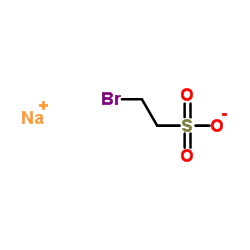Typical methanogenic inhibitors can considerably alter bacterial populations and affect the interaction between fatty acid degraders and homoacetogens.
Kewei Xu, He Liu, Xiufen Li, Jian Chen, Aijie Wang
文献索引:Appl. Microbiol. Biotechnol. 87(6) , 2267-79, (2010)
全文:HTML全文
摘要
The effects of two typical methanogenic inhibitors [2-bromoethanesulfonate (BES) and chloroform (CHCl(3))] on the bacterial populations were investigated using molecular ecological techniques. Terminal restriction fragment length polymorphism analyses (T-RFLP) in combination with clone library showed that both the toxicants not only inhibited methanogenic activity but also considerably altered the bacterial community structure. Species of low % G + C Gram-positive bacteria (Clostridiales), high % G + C Actinomycetes, and uncultured Chloroflexi showed relatively greater tolerance of CHCl(3), whereas the BES T-RFLP patterns were characterized by prevalence of Geobacter hydrogenophilus and homoacetogenic Moorella sp. In addition, due to indirect thermodynamic inhibition caused by high hydrogen partial pressures, the growth of obligately syntrophic acetogenic Syntrophomonas and Syntrophobacter was also affected by selective inhibition of methanogenesis. Interestingly, by comparing the fermentative intermediates detected in BES- and CHCl(3)-treated experiments, it was furthermore found that when methanogenesis is specifically inhibited, the syntrophic interaction between hydrogen-producing fatty acid degraders and hydrogen-utilizating homoacetogens seemed to be strengthened.
相关化合物
| 结构式 | 名称/CAS号 | 分子式 | 全部文献 |
|---|---|---|---|
 |
2-溴乙基磺酸钠
CAS:4263-52-9 |
C2H4BrNaO3S |
|
Methanogens: principal methylators of mercury in lake periph...
2011-09-15 [Environ. Sci. Technol. 45(18) , 7693-700, (2011)] |
|
Polyphasic characterization of two microbial consortia with ...
2012-11-01 [J. Biosci. Bioeng. 114(5) , 512-7, (2012)] |
|
The reductive dechlorination of 2,3,4,5-tetrachlorobiphenyl ...
2006-02-01 [FEMS Microbiol. Ecol. 55(2) , 248-61, (2006)] |
|
Strategies to suppress hydrogen-consuming microorganisms aff...
2011-08-01 [Biotechnol. Bioeng. 108(8) , 1766-75, (2011)] |
|
Reductive decolourisation of azo dyes by mesophilic and ther...
2005-01-01 [Water Sci. Technol. 52(1-2) , 351-6, (2005)] |